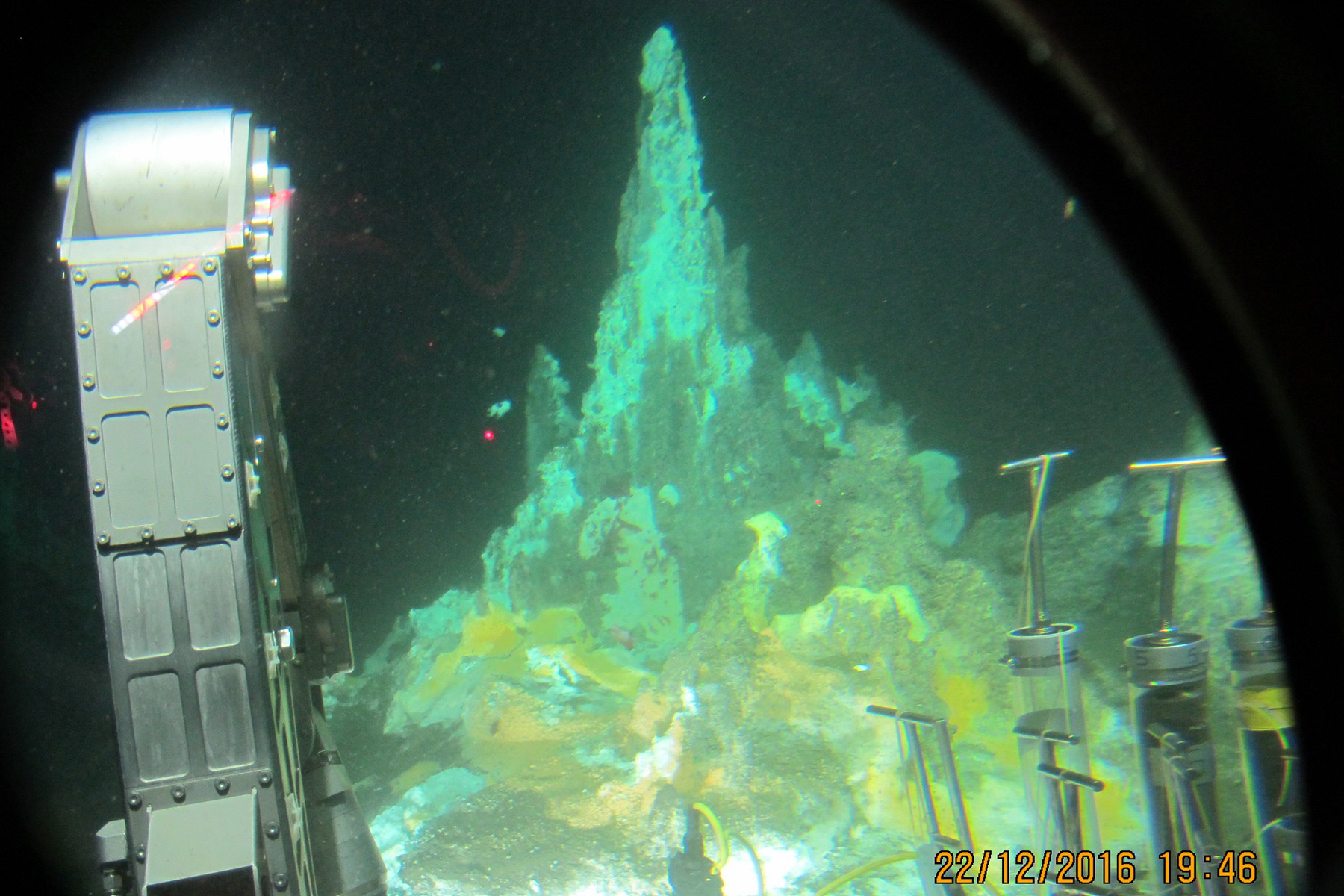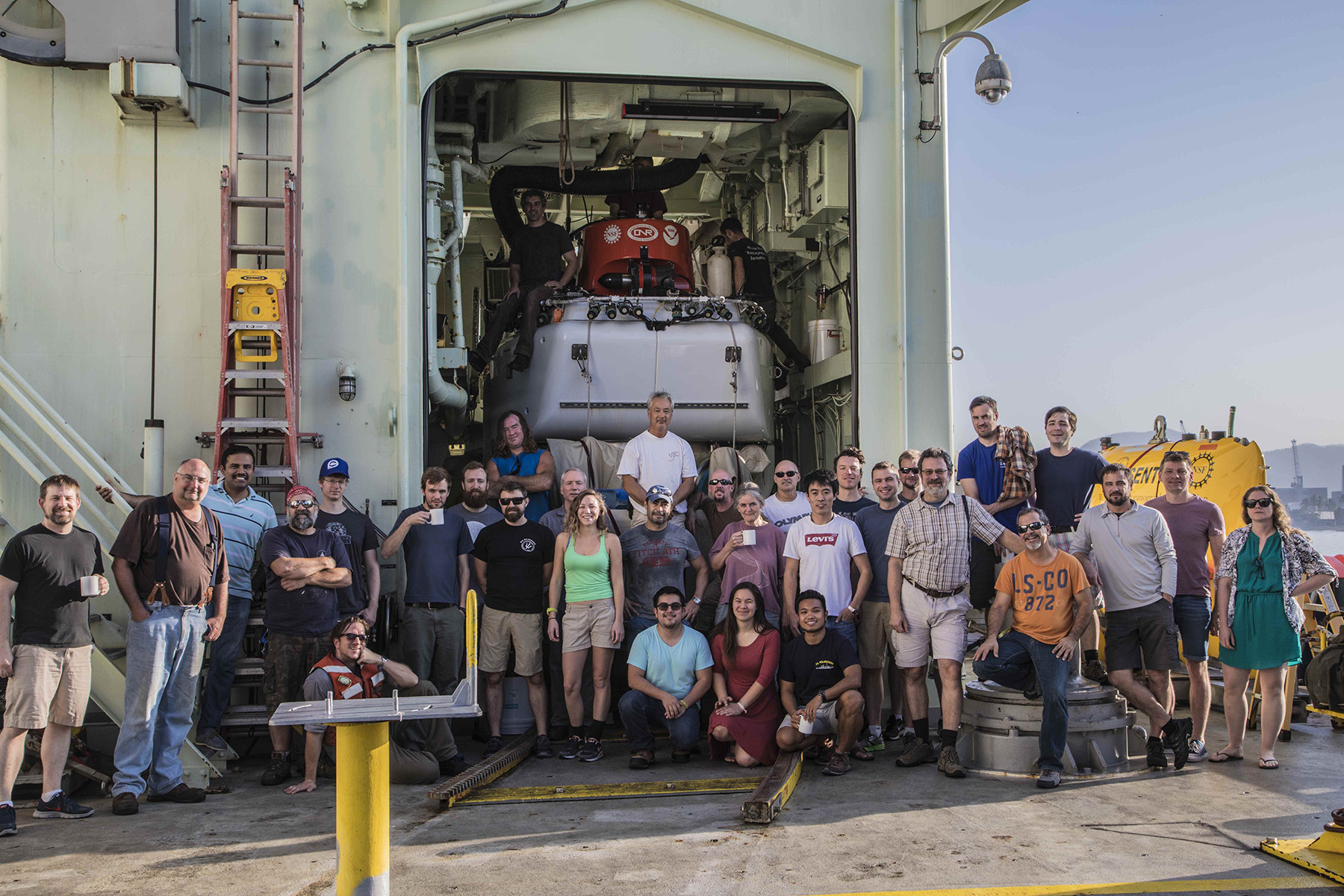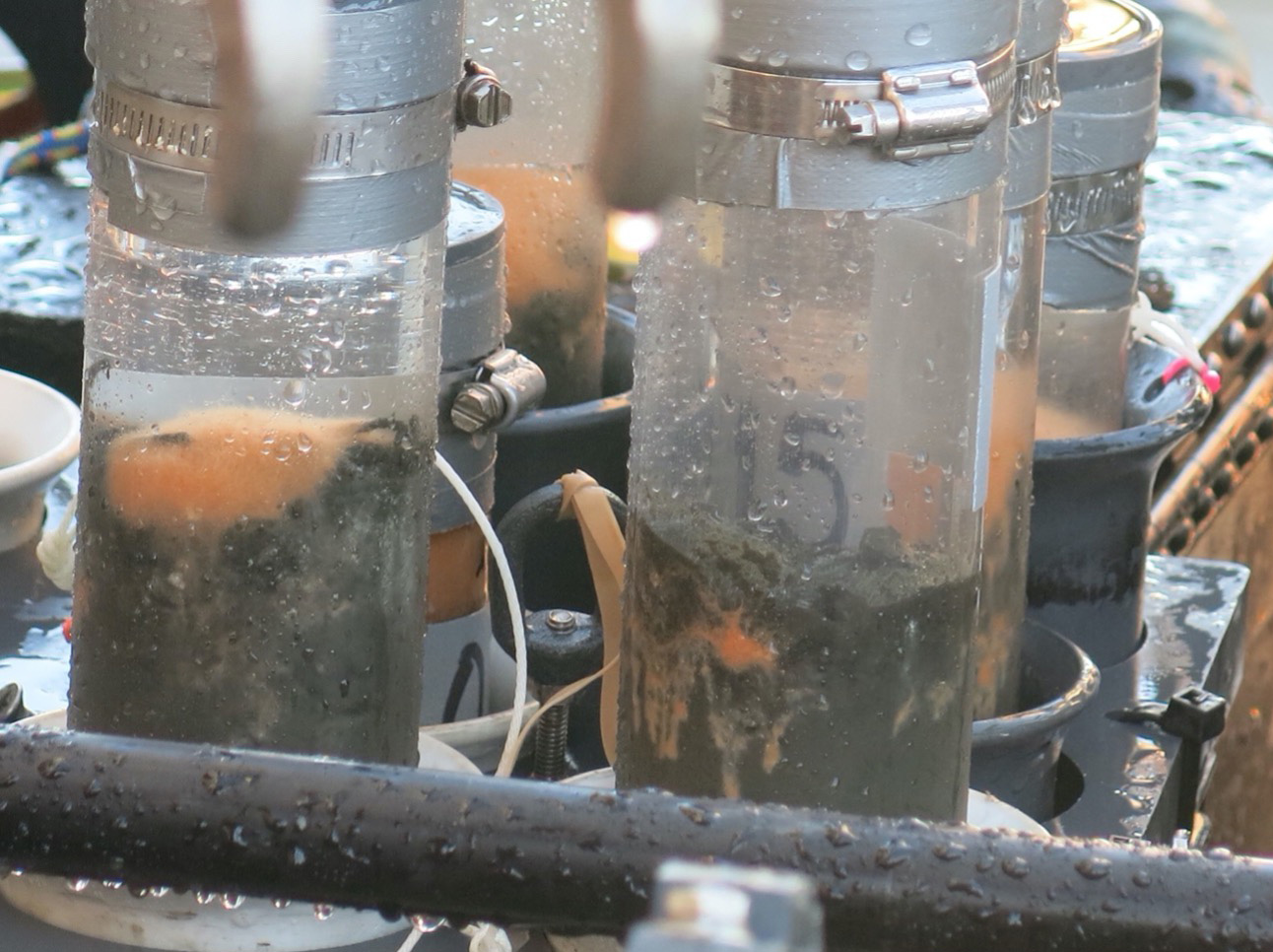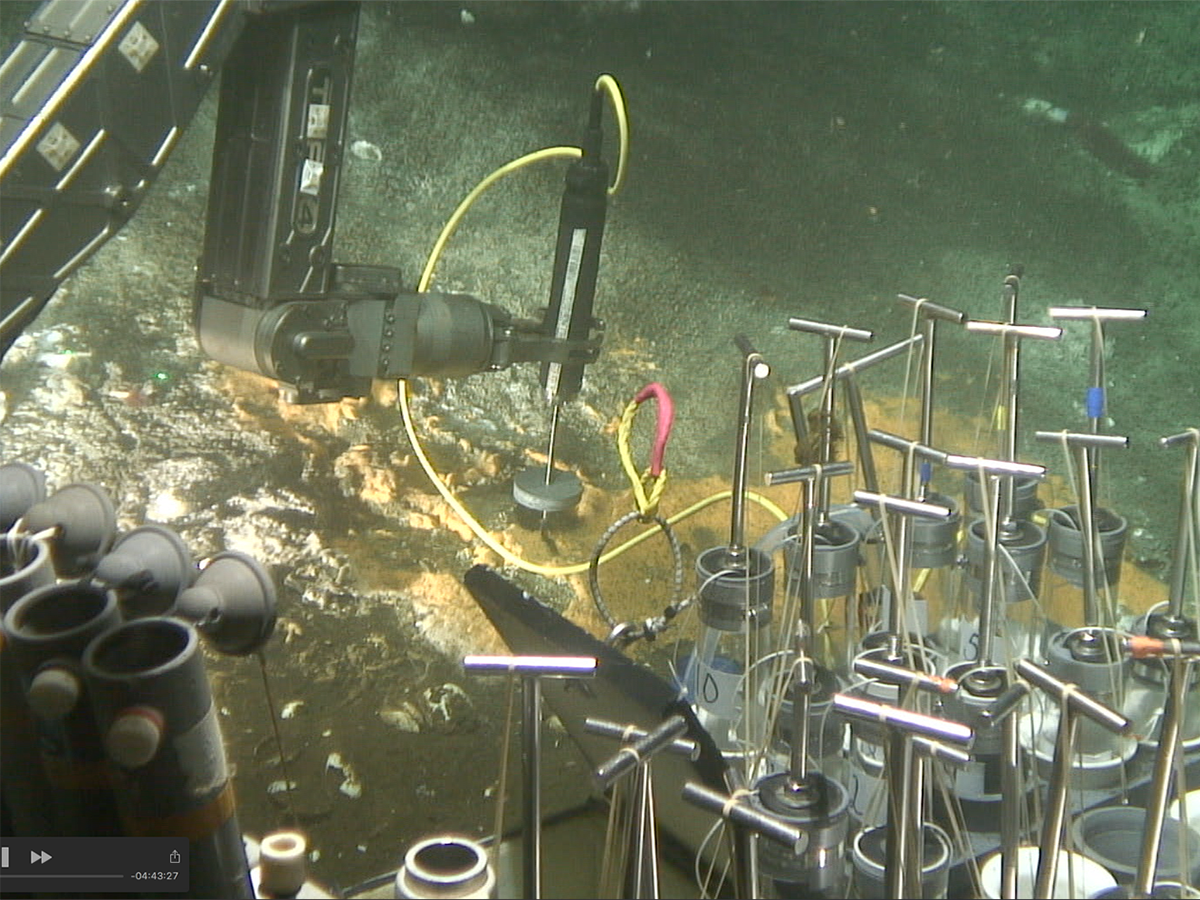Some Seafloor Microbes Can Take the Heat: And Here’s What They Eat

Contact: dkenney@mbl.edu; 508-289-7139
WOODS HOLE, Mass. — It’s cold in the depths of the world’s oceans; most of the seafloor is at a chilly 4°C. Not so the seafloor of Guaymas Basin in the Gulf of California. Here, tectonic plates drift apart and heat from Earth’s interior can rise up -- so far up that it bakes large areas of the seafloor sediments, turning buried organic matter into methane and other energy-rich compounds.
What kinds of organisms thrive in this oceanic hotspot? In two new studies, MBL Assistant Scientist Emil Ruff and collaborators show that distinct regions within the Basin harbor specially adapted microorganisms; discover new microbial inhabitants of this deep-sea community; and suggest how the community may be dramatically influencing carbon cycling in the hot seafloor sediments.
Right at the seafloor where the geothermal heat meets the cold deep ocean, the sediments often have a cozy 30-60 °C, ideal temperatures for heat-loving microbes (thermophiles). These exotic heat-lovers can use methane as an energy source and thrive in seascapes that are so different from most other ecosystems on Earth that they could well exist on another planet entirely (see photo 1). The methane munchers and other organisms that use the chemical energy of the hydrothermal fluids are the base of the food web, without which the ecosystem would not be possible. In the first study, Teske et al. show that these methane munchers and other microbes are specially adapted to distinct thermal and geochemical regimes within the Basin.
 Photo 1: Hydrothermal mound at ~2000 meters depth in the Guaymas Basin. This several meter tall “living” tower of hydrocarbon-soaked minerals and sediments is permeated by hydrothermal fluids. The surface of the structure is covered with white and orange mats of bacteria that use sulfur as an energy source. Seen from the submersible Alvin. Credit: Teske et al, Front. Microb., 2021
Photo 1: Hydrothermal mound at ~2000 meters depth in the Guaymas Basin. This several meter tall “living” tower of hydrocarbon-soaked minerals and sediments is permeated by hydrothermal fluids. The surface of the structure is covered with white and orange mats of bacteria that use sulfur as an energy source. Seen from the submersible Alvin. Credit: Teske et al, Front. Microb., 2021The microbial communities in these hydrothermal sediments are very diverse, yet only a few organisms can use methane as an energy source. So, what is everyone else doing?
A large part – or most - of the microbial diversity seems to consist of organisms, which– like humans – can only use reduced organic compounds for energy (such as sugars, proteins and fatty acids). These organisms, called heterotrophs, must live in some way off the biomass that rains down from the surface ocean or is produced by the methane munchers and other primary producers.
 Participants in the R/V Atlantis expedition to Guaymas Basin in 2016. The R/V Atlantis is operated by Woods Hole Oceanographic Institution and its expeditions include scientists from many institutions. Deep-sea research is an interdisciplinary team effort that would not be possible without the input of numerous colleagues, crew members, and funding agencies. At rear, the deep-sea submersible Alvin is tucked away in its hangar. Credit: Alexander Epp, Woods Hole Oceanographic Institution
Participants in the R/V Atlantis expedition to Guaymas Basin in 2016. The R/V Atlantis is operated by Woods Hole Oceanographic Institution and its expeditions include scientists from many institutions. Deep-sea research is an interdisciplinary team effort that would not be possible without the input of numerous colleagues, crew members, and funding agencies. At rear, the deep-sea submersible Alvin is tucked away in its hangar. Credit: Alexander Epp, Woods Hole Oceanographic InstitutionIt is a long-standing question what compounds these heterotrophs use to make a living and why so many different species can live side-by-side without outcompeting each other. In the second study, Sherlynette Pérez Castro, a postdoctoral scientist in Ruff’s lab at MBL, and collaborators show that certain heat lovers specialize in degrading the “debris” that is released to the environment when other cells perish: organic polymers and macromolecules. (See Pérez Castro’s “Behind the Paper” blog post in Nature Microbiology.)
Every cell, be it a microbial or a human cell, mainly consists of four types of macromolecules: protein, nucleic acids (DNA, RNA), lipids (fatty acids) and polysaccharides (sugars). The researchers used each one of these four compounds successively as the sole energy and carbon source to grow and identify those deep-sea organisms that can make a living on the respective compound.
 Freshly recovered hydrothermal sediment cores from Guaymas Basin, with orange-colored microbial mats of sulfur-oxidizing Beggiatoaceae. Alvin Dive 4862. Credit: A. Teske
Freshly recovered hydrothermal sediment cores from Guaymas Basin, with orange-colored microbial mats of sulfur-oxidizing Beggiatoaceae. Alvin Dive 4862. Credit: A. TeskeThey found that all of the organisms that they could cultivate in their lab experiments belonged to previously uncultivated microbial species. The experiments also showed that each polymer was nutrition for a whole food web of organisms, which explains how a single molecule can sustain a zoo of organisms, suggesting a reason for the high diversity of coexisting heterotrophs.
To their surprise, none of the 48 different cultures produced methane, a common end product of heterotrophic organisms. This could mean that the methane that is emitted at the seafloor is completely removed from the ecosystem by the microbial communities, which has implications for the deep-sea carbon cycle that remain to be explored.
 Alvin’s robotic arm taking the seafloor temperature at the Guaymas Basin using a heat probe. Credit: Teske et al., 2021
Alvin’s robotic arm taking the seafloor temperature at the Guaymas Basin using a heat probe. Credit: Teske et al., 2021Andreas Teske is a professor in the Department of Marine Sciences, University of North Carolina, Chapel Hill, while Ruff and Pérez-Castro have appointments at the MBL in both the Ecosystems Center and the Josephine Bay Paul Center for Comparative Molecular Biology and Evolution.
Citations:
Andreas Teske et al. (2021) Microbial Communities Under Distinct Thermal and Geochemical Regimes in Axial and Off-Axis Sediments of Guaymas Basin. Frontiers in Microbiology, DOI: 10.3389/fmicb.2021.633649
Sherlynette Pérez Castro et al. (2021) Degradation of Biological Macromolecules Supports Uncultured Microbial Populations in Guaymas Basin Hydrothermal Sediments. The ISME Journal, DOI: 10.1038/s41396-021-01026-5
Pérez Castro’s “Behind the Paper” Blog Post in Nature Microbiology
—###—
The Marine Biological Laboratory (MBL) is dedicated to scientific discovery – exploring fundamental biology, understanding marine biodiversity and the environment, and informing the human condition through research and education. Founded in Woods Hole, Massachusetts in 1888, the MBL is a private, nonprofit institution and an affiliate of the University of Chicago.